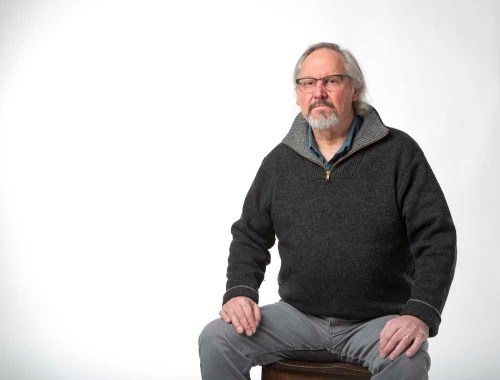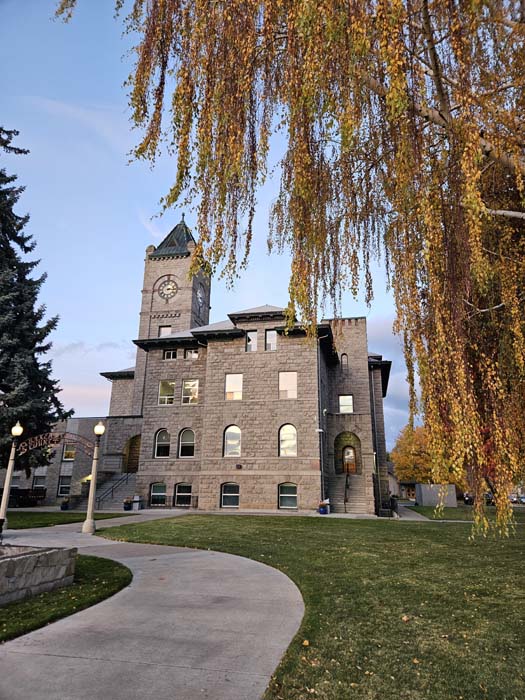Retirement marks end of era for CUJ
Published 2:57 pm Saturday, March 6, 2021

- Phinney
PENDLETON — Looking back at his career, Wil Phinney tends not to think of himself as a journalist or reporter.
Instead, he prefers a far more old-fashioned title: newspaperman.
For 46 years, Phinney helped put out a newspaper on a regular basis, the last 24 at the Confederated Umatilla Journal. In December 2020, he put out his last.
Phinney, 64, said he had been trying to retire for a while, but the Confederated Tribes of the Umatilla Indian Reservation, the owner of the CUJ, asked him to stay on while the COVID-19 pandemic spread through the reservation. With the vaccine now being distributed among tribal members, Phinney followed through on putting away the editor’s pen.
Over a career that spanned four decades, Phinney not only covered some of rural Oregon’s most important events but also a remarkable period of growth and change for the CTUIR.
Phinney said he caught the writing bug earlier when he entered a fifth grade essay contest.
He was born in Southern California, but spent the remainder of his childhood in Eastern Oregon after turning 2, jumping from town to town as his father’s career advanced at Safeway. Phinney eventually ended his school years in Hermiston, where he was editor of Hermiston High’s student newspaper.
He tried his hand at college by attending the University of Oregon, but after a year, Phinney dropped out to work for the hometown Hermiston Herald in 1975.
A 19-year-old Phinney made enough of an impression on then-owner Jerry Reed that he was soon named editor of the Heppner Gazette-Times. But he soon looked to venture outside the confines of the Northwest.
He spent several years working as an editor and publisher at newspapers in Wyoming and Montana, not only further refining his editing and reporting skills, but learning the entirety of the newspaper business like layout, production, ad sales and photography.
Phinney returned to Oregon in 1983 to take a job with The Dalles Weekly Reminder, a publication looking to transition away from mostly printing advertisements and into more news coverage.
The Reminder was one of the first newspapers to cover the controversy surrounding a Wasco County commune that was established by followers of Bhagwan Shree Rajneesh, an Indian mystic.
Phinney remembers being flooded with 54 letters to the editor from angry Rajneeshis who were critical of the Reminder‘s coverage of their settlement. He relished their responses.
“I made a point to run every damn Rajneeshi letter,” he said.
In 1985, he moved back home to take a job as sports editor with the East Oregonian before eventually moving to the news side.
Hal McCune, who worked with Phinney in the newsroom during his time at the EO, remembered Phinney as extroverted and self-starting. Foreshadowing his time with the CUJ, McCune said Phinney was the best tribal reporter the paper had.
“He definitely made his mark,” he said.
Before becoming his colleagues at the CTUIR, Deb Croswell and Chuck Sams’ first experience with Phinney was as young interns helping out in the EO darkroom in the 1980s.
As time passed, eventually Croswell would ascend to become the CTUIR’s director of public affairs. One of the tasks the Tribes gave to her was revitalizing the Confederated Umatilla Journal, which had been established in 1977 but had fallen out of regular publication.
When Croswell turned to Phinney in 1996 to become the editor of the CUJ, she was hiring a local with decades of experience in every facet of the newspaper business and had developed sources on the reservation from his time at the East Oregonian. But there was also talk among the community about whether a white man should be the one to lead a tribally owned newspaper.
But Croswell, who now works as the executive managing director of Cayuse Holdings, said Phinney put in the time to earn the respect of the tribal community.
Marcus Luke, who worked as a reporter under Phinney from 1999 to 2005, remembers the many weekends they went out to events on the reservation. It got to the point that tribal members started seeking them out to talk about the comings and goings of the community, and if the CUJ wasn’t there, Luke and Phinney would be sure to hear about it.
Although he wasn’t a tribal member, Phinney knew he had a special role in covering tribal life, often being one of the only nonmembers to cover CTUIR religious and cultural ceremonies.
Phinney was the only member of the media to witness the 2017 burial of “the Ancient One,” a 9,000-year-old body that was connected to several Northwest tribes. Sams, who managed as the Tribes’ communications director and later as the interim executive director, said the Tribes knew they could trust Phinney to not disclose the location of the event, an important condition for all the tribes involved.
Although the CUJ derives part of its income from advertisements, the newspaper is owned by the CTUIR and overseen under the umbrella of tribal government.
Phinney said the fact that he was covering a tribal government that was also responsible for signing his checks occasionally caused some tension, but his supervisors never stepped in to interfere in the CUJ‘s news coverage.
Sams said it was important for the integrity of the newspaper to maintain a level of independence, and under Phinney’s tenure, it’s always operated under the Society of Professional Journalists’ code of ethics.
Throughout most of his tenure, the CUJ was mostly a two-person operation, meaning Phinney was often front and center in reporting the developments of the Tribes.
Phinney said he felt fortunate to cover the CTUIR as it went through a period of tremendous growth. The economic success of the Wildhorse Resort & Casino not only pushed the CTUIR to becoming a commercial attraction and one of the top employers in the region, it led to an expansion in the Tribes’ cultural pursuits. By the time of Phinney’s retirement, he had seen the Tribes build a new school, health clinic, cultural museum and governance center, and had been on reporting trips to New Zealand and Washington, D.C.
Phinney’s ink-stained days aren’t completely over. He said he’s looking into occasionally freelancing at the CUJ and elsewhere, but he’s also looking into pursuing other opportunities, like coaching the Nixyaawii Community School golf team.
His wife, Carrie, continues to work as an administrative assistant at the school. His three daughters are now grown, and after doing some journalism in their high school years, are all now pursuing careers in other fields.
“I told them all to get newspaper work out of their systems, but I’m encouraged that they still read the news,” he said.
When Phinney retired, the Tribes promoted reporter Cary Rosenbaum to editor as Phinney’s permanent replacement.
Phinney said Rosenbaum should be a good fit for where news is heading, more experienced in working on the internet and social media.
“I’m an old dog that didn’t learn the new tricks,” he said.
But for 46 years, Phinney put out a newspaper each month that told the story of not just the CTUIR, but also the rural West.
“It’s the only thing I’ve ever done,” he said.





